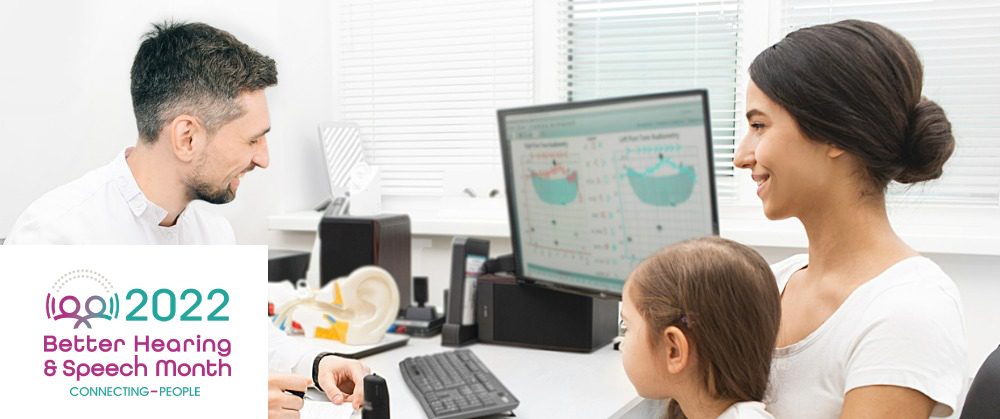It’s the final week of Better Hearing and Speech Month (BHSM), and we’re focusing on how audiologists and speech-language pathologists (SLPs) can help their clients in their everyday lives. Audiologists can give people the tools they need to protect their hearing at work, and SLPs provide services for clients at home.
Many Americans work in jobs that put their hearing health at risk. The articles we’re featuring can help audiologists (a) understand the situations that these clients are facing on the job and (b) work with clients in these settings to conserve and protect hearing health. We’ll also look at the services that SLPs can offer in homes—via applying advances in telepractice and developing programs for clients to follow at home.
Protecting Hearing at Work
The Impacts of Noise Exposure on the Middle Ear Muscle Reflex in a Veteran Population: Military veterans are at risk for hearing damage due to a number of factors, including noise exposure. This article explores a noninvasive way to test the effects of prolonged noise exposure in this population.
Prevalence of Self-Reported Hearing Loss and Associated Risk Factors: Findings From the Survey of the Health of Wisconsin: The results of this survey of more than 2,700 residents in Wisconsin can be a helpful resource for audiologists looking to understand the hearing concerns of the public. Residents who reported hearing loss were more than twice as likely to report that they worked in an environment that was noisy more than half the time.
Noise Exposure, Headsets, and Auditory and Nonauditory Symptoms in Call Center Operators: Occupational noise can be an issue for workers in an office setting, as well. In this article, authors found that call center operators reported both auditory and nonauditory symptoms of occupational noise, but that using a binaural headset can help lower sound pressure levels.
Speech-Language Pathology at Home
A Systematic Review of Adherence Strategies for Adult Populations in Speech-Language Pathology Treatment: Although SLPs advise adult patients to complete certain programs at home to improve their outcomes in the clinic, little is known about adult patients’ adherence to these programs. In this review, the authors look at the limited information that is currently available, while suggesting directions for future studies on program adherence at home.
SuperSpeech: Multilingual Speech and Language Maintenance Intervention for Vietnamese–Australian Children and Families via Telepractice: In primarily English-speaking countries, multilingual children frequently receive support only in English. This study introduced an evidence-based program to support not only English speech development but home language maintenance as well via an online platform.
Speech-Language Pathologists’ Practice Patterns When Designing Home Practice Programs for Persons With Aphasia: A Survey: In this article, the authors attempted to summarize how SLPs currently develop and implement home practice programs for people with poststroke aphasia. The authors found that although some SLPs used mobile apps, phone calls, text messages, and emails, technology use among in-home programs was reported infrequently.
Celebrating All ASHA Members
In the ASHA Journals Program, we work to celebrate and inform ASHA members every day, with more than 900 articles published in 2021 alone. Be sure to check out ASHAWire to find archived articles and the latest in whatever CSD topic interests you.
We hope that the articles we’ve featured this month give you inspiration to help the clients you serve better connect with their loved ones, coworkers, and the rest of the world. Be sure to check out the BHSM page for resources from all 4 weeks of BHSM. We appreciate the services that you provide, and we aim to help raise awareness about how all Americans in need of an ASHA member’s services can be connected with a clinician—during BHSM and beyond!







